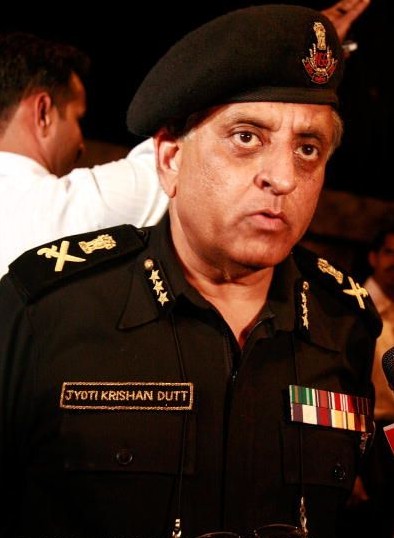|
|
the-south-asian.com January - March 2009 |
|
|||
|
Five Main Targets - CST
Taj
- Mumbai's
|
|
||||
|
Jyoti Krishan Dutt & the Black Cats Heroes of Mumbai
Jyoti Krishan Dutt, Director General (DG) of the elite National Security Guards, planned and led the Operation Black Tornado, a commando operation to counter the terrorist attacks unleashed on multiple sites in Mumbai between November 26 - 29, 2008. Dutt, who until just the day before, also held a concurrent charge as the Commissioner, Bureau of Civil Aviation Security, was in Delhi as he watched the events unfold on the small screen. He immediately assessed the situation and his men were already on alert when they received the deployment request from the Maharashtra state government. More than four hundred NSG commandos, also known as Black Cats, assembled in minutes at their training base in Manesar - their orders were to proceed to Mumbai, where a group of terrorists had unleashed a night of killings at some of its busiest, crowded, and best-loved locations. Weapons and ammunition were loaded into the vehicles, and the Black Cats, as the NSG commandos are known, were on their way to the Delhi airport, a distance of about 40 kms from their base at Manesar. Contrary to criticism that followed later about the time taken by the commandos to reach Mumbai, the men had moved within the prescribed time. The scale of the operation required special weapons and equipment to be loaded and then unloaded from trucks at two locations Delhi and Mumbai. The NSG commandos reached Mumbai at 0500 hours on November 27, and proceeded immediately to the three different locations The Taj complex, The Oberoi complex, and the Nariman House where the terrorists were holed up with an unknown number of guests and hostages, having killed over a hundred people in multiple places in the course of a few hours. As soon as Dutt and his men reached the three locations, they were briefed by the State Police and the Intelligence authorities, and they then took control of the sites and began the operations at once. Their objectives, set by the DG himself, were very clear - no loss of innocent lives, and to protect and rescue hostages, guests and staff. More importantly, the man in command wanted, as far as possible, his men to overpower and capture the terrorists alive. Thus began a battle with an unknown number of gunmen, who used distractory tactics whenever under pressure. They would put room curtains on fire and use the time to rest while the fire engines doused the fire. It did not take long for Dutt to figure out a counter-strategy. The terrorists had also not made any demands, but there came an opportunity, during the operation, to give them the option of surrender and for them to put forward their demands but they replied with a volley of abuses and shots. Read the complete story in The South Asian Life & Times
|
|||||
|
Copyright © 2000 - 2009 [the-south-asian.com]. Intellectual Property. All rights reserved. |
|||||
